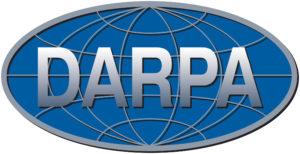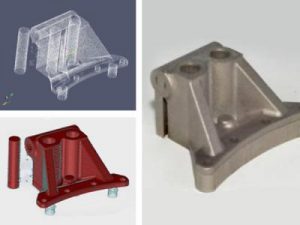 The Defense Advanced Research Projects Agency, or DARPA, has been a vital part of the United States Department of Defense for more than 60 years. It was launched at the same time as Sputnik in 1957, and is dedicated to the use of breakthrough technology for national security purposes. DARPA works with innovators both inside and outside of the government, and has been responsible for the development of military capabilities such as precision weapons and stealth technology as well as things like the Internet, automated voice recognition, and GPS.
The Defense Advanced Research Projects Agency, or DARPA, has been a vital part of the United States Department of Defense for more than 60 years. It was launched at the same time as Sputnik in 1957, and is dedicated to the use of breakthrough technology for national security purposes. DARPA works with innovators both inside and outside of the government, and has been responsible for the development of military capabilities such as precision weapons and stealth technology as well as things like the Internet, automated voice recognition, and GPS.
DARPA has been pursuing the development of additive manufacturing since its early days of existence. After the Cold War, in the 1990s, there was an urgent need to make defense modernization more affordable. DARPA was asked to lead a DOD-wide initiative in dual-use technologies. One thread of the initiative included the solid free-form fabrication program, which expanded into what is now called 3D printing.
“There were a few capabilities out there including stereolithography, that 3D Systems had developed, that were very synergistic at the time, to move from concept models and tooling to making parts with form, fit and function,” says former DARPA Program Manager Bill Coblenz. “Overall, what we wanted to do in these programs was create a digital thread that connected design right through to manufacturing, to speed up and reduce the cost of producing defense systems. I think we’re well on the way to doing that.”
Manufacturing was re-emphasized by DARPA in 2010 with programs such as Open Manufacturing, Materials Development for Platforms, or MDP, and Transformative Design. The Open Manufacturing Program was developed to build confidence in new technology like 3D printing so that adopting it would not be considered a risk. MDP linked the tools being used by material developers with those being used by the design community and manufacturing community.
“If you look at where these innovations are used, you will find that it still takes a very long time for these new materials and manufacturing processes to impact how we actually design and build things, especially when people’s lives depend on it, “says Jan Vandenbrande, DARPA Program Manager. “To make things more complicated, additive manufacturing techniques can create materials on the go whose properties are different from the ones we have studied over thousands of years. So how would you compensate for this? Or better yet, take advantage of it? We could open up entirely new operational envelopes, while also integrating additional functionality. To accomplish this vision, DARPA is working on several programs.”
 DARPA is working on changing the relationship between humans and computers, to make computers true partners in design, Vandebrande continues.
DARPA is working on changing the relationship between humans and computers, to make computers true partners in design, Vandebrande continues.
DARPA’s work with additive manufacturing has included such innovations as 3D printed rocket engines, bioengineered construction materials, virtual reality developments and much more. Advanced manufacturing is critical to national security, the agency emphasizes, and it will continue to develop 3D printing and other advanced technologies for both military and civilian purposes.
You can learn more about DARPA’s work with advanced manufacturing technologies below:
Discuss this and other 3D printing topics at 3DPrintBoard.com or share your thoughts below.
Subscribe to Our Email Newsletter
Stay up-to-date on all the latest news from the 3D printing industry and receive information and offers from third party vendors.
You May Also Like
3D Printing Unpeeled: Biofuel Waste to Filament & Sustainable Photopolymers
I can’t ever remember a day with so many potentially high impact news stories have come out. In one story, we all know that there are problems with the safety...
Finnair Hires AM Craft to 3D Print Plastic Parts for Aircraft Interiors
Riga-based AM Craft, a supplier specialized in 3D printing aviation components and certified under EASA Part 21G, announced a significant achievement today. The company will assist in upgrading Finnair’s A320...
3DPOD Episode 198: High Speed Sintering with Neil Hopkinson, VP of AM at Stratasys
Neil Hopkinson, a pioneering 3D printing researcher, played a pivotal role in developing a body of research that is widely utilized today. He also invented High Speed Sintering (HSS), also...
3D Printing Webinar and Event Roundup: May 12, 2024
Webinars and events are picking up in the AM industry this week! ASTM International continues its Professional Certificate Course and Stratasys continues its advanced in-person trainings, while 3D Systems is...

































